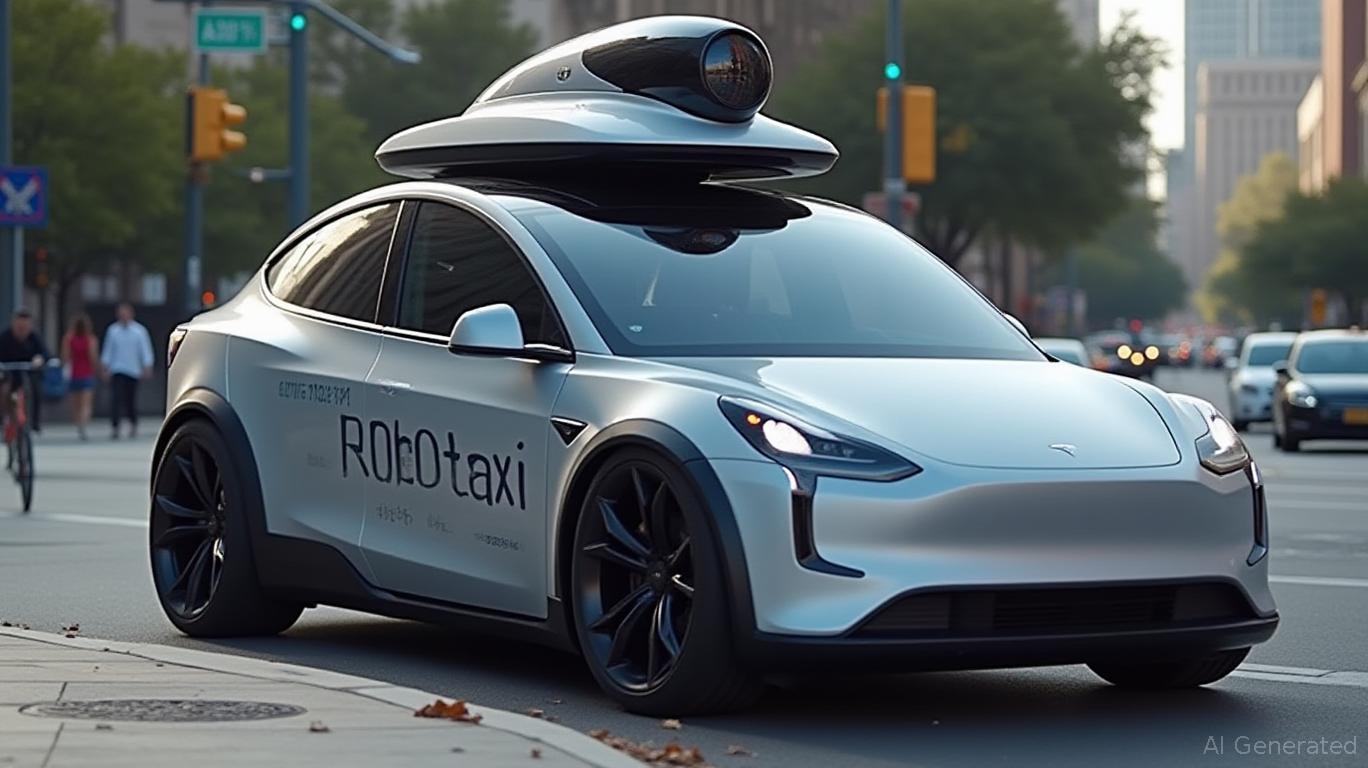Tesla's Robotaxi Gamble: Can Austin Be the Turning Point for Autonomous Dominance?
The race to commercialize autonomous vehicles has reached a critical juncture, and Tesla's much-anticipated Robotaxi deployment in Austin, Texas, stands at the center of it. For investors, the launch is a litmus test of Tesla's ability to transform its vision of driverless transportation into a viable business—and a barometer of the risks and rewards of betting on autonomous vehicle (AV) commercialization.
Ask Aime: Will Tesla's Robotaxi launch in Austin signal the dawn of autonomous vehicle revolution?

The Strategic Rewards: A Bold Bet on the Future
Tesla's entry into the robotaxi market is not merely about incremental revenue. It represents a bid to dominate a $1.5 trillion autonomous mobility market projected to boom by 2030. Here's why the stakes are so high:
Market Leadership at a Crossroads
Competitors like Waymo (Alphabet's autonomous arm) have already secured early wins, operating commercial services in multiple U.S. cities since 2023. Tesla's delayed launch—initially targeting 2024 but pushed to June 2025—risks ceding further ground. However, the company's plan to deploy 1,000 autonomous Model Ys in Austin by year-end could signal a rapid scaling strategy. The move leverages Tesla's existing software ecosystem and Supercharger network, which could give it an edge in operational efficiency.Valuation Catalyst
Tesla's stock (TSLA) has long been a story of ambition over execution. A successful Robotaxi rollout could validate Musk's vision of a software-driven Tesla, shifting the company's valuation from a carmaker to a tech giant. Analysts estimate that autonomous driving could add $300 billion to Tesla's valuation if it captures even 10% of the global mobility market.Technological Differentiation
Unlike Waymo's multi-sensor approach (LiDAR, radar, cameras), Tesla's camera-only system is cheaper and scalable—a critical advantage in cost-sensitive markets. While critics argue this approach lacks redundancy, it aligns with Tesla's “software-defined vehicle” philosophy, where over-the-air updates can continuously improve performance.Ask Aime: What's the Tesla Robotaxi's impact on US stock markets?
Volatility reflects investor skepticism amid missed milestones and regulatory hurdles.
The Risks Looming Large: Why This Could Backfire
Tesla's Robotaxi gamble is fraught with challenges that could undermine its ambitions:
Regulatory and Safety Headwinds
Texas's new autonomous vehicle law, effective September 2025, mandates permits, safety reporting, and penalties for non-compliance. While Tesla claims readiness, its Full Self-Driving (FSD) system has recorded a critical disengagement every 444 miles—a metric far below Waymo's industry-leading 1,200 miles between disengagements. Incidents like Tesla's Model Y failing to stop for a school bus (as demonstrated by safety group The Dawn Project) underscore lingering reliability gaps.Technical Execution Risks
Tesla's reliance on “teleoperation” (remote human control) and geofenced zones signals a workaround for its software's limitations. While this approach is common in testing, it raises scalability questions. Competitors like Cruise and Waymo have already demonstrated broader operational ranges. Moreover, the Cybercab—a purpose-built driverless vehicle—won't debut until 2026, leaving Tesla to retrofit existing cars, which may limit its competitive edge.Market Realities and Competition
Waymo's head start, combined with partnerships (e.g., Uber in Austin), means Tesla faces an uphill battle for consumer trust and market share. Ride-hailing incumbents like Uber and Lyft could also pivot aggressively to AVs, leveraging their existing networks. Tesla's invite-only launch and limited geo-fenced area suggest a slow ramp-up, which may not satisfy investor demands for rapid growth.
Investment Considerations: To Buy, Hold, or Bail?
For investors, Tesla's Robotaxi rollout is a high-risk, high-reward proposition. Here's how to weigh the factors:
Buy if: You believe Tesla can overcome technical and regulatory hurdles, scale its autonomous fleet rapidly, and capture a meaningful slice of the mobility market. Success in Austin could unlock global expansion, especially in Texas's permissive regulatory environment, which could pressure other states to follow suit.
Hold if: You're bullish on Tesla's long-term software potential but wary of near-term execution risks. The stock's valuation hinges on future autonomous revenue streams, making this a “patient investor” play.
Sell if: You see persistent software flaws, regulatory setbacks, or a failure to differentiate from competitors as existential threats. A botched launch could reignite doubts about Tesla's leadership and fuel further stock volatility.
Final Analysis: A Moment of Truth for Tesla
Tesla's Robotaxi deployment is more than a product launch—it's a defining chapter in its evolution from carmaker to tech titan. The next few months will test whether Musk's vision aligns with reality. Investors should monitor three key metrics:
1. Regulatory Milestones: Does Tesla secure permits by September 2025?
2. Safety Performance: Can FSD reduce disengagement rates and avoid high-profile incidents?
3. Market Adoption: Will ridership grow beyond Tesla loyalists to the broader public?
For now, the verdict remains open. Tesla's stock, having fluctuated between $150 and $300 over three years, reflects this uncertainty. The Roadster of autonomous commercialization, Austin's Robotaxi experiment could either cement Tesla's legacy or reveal its limitations. For investors, the ride ahead is anything but boring.

Comments
No comments yet